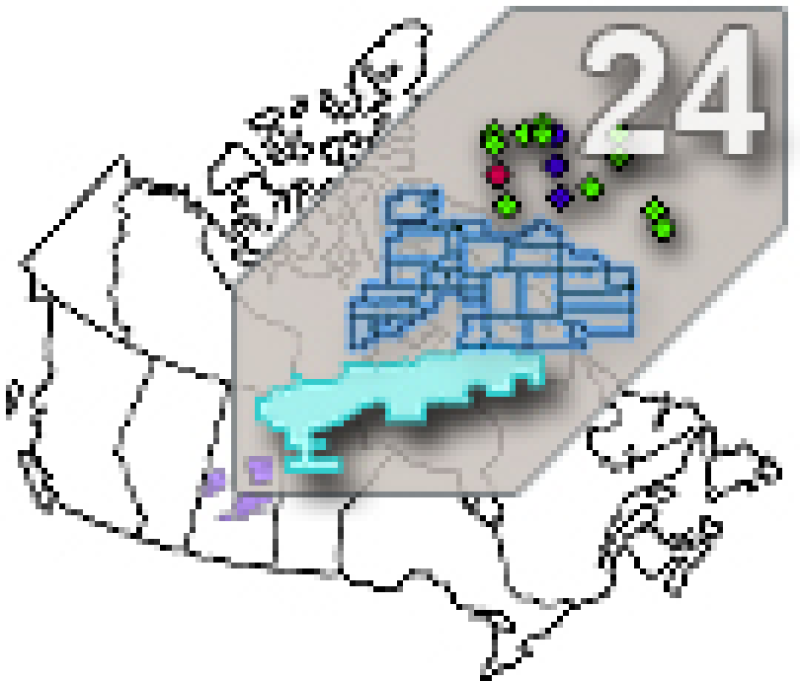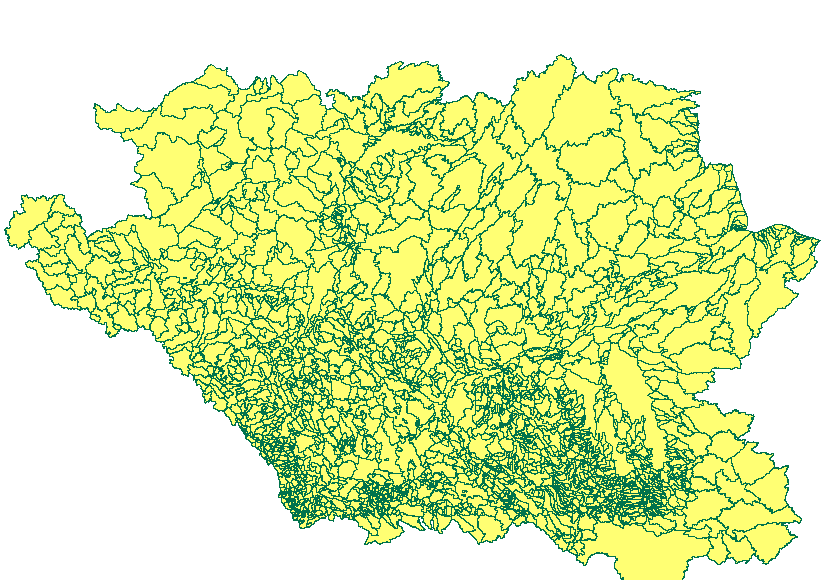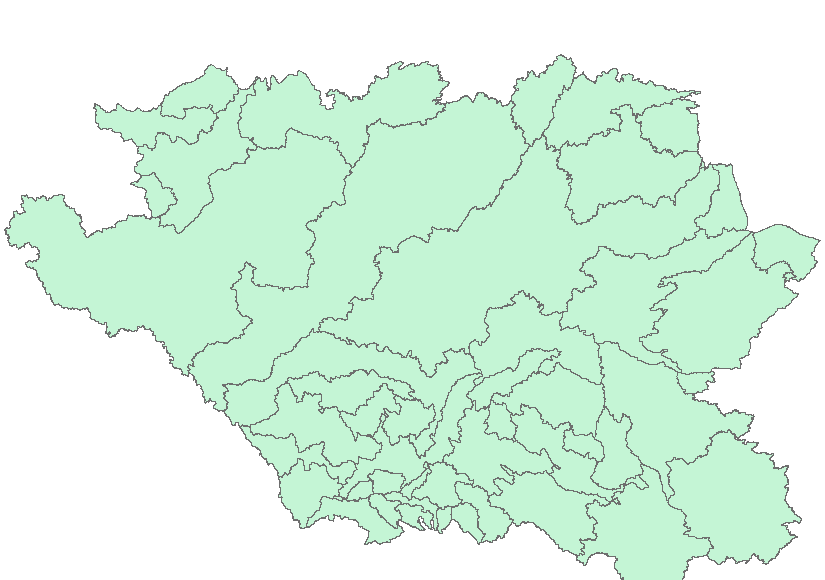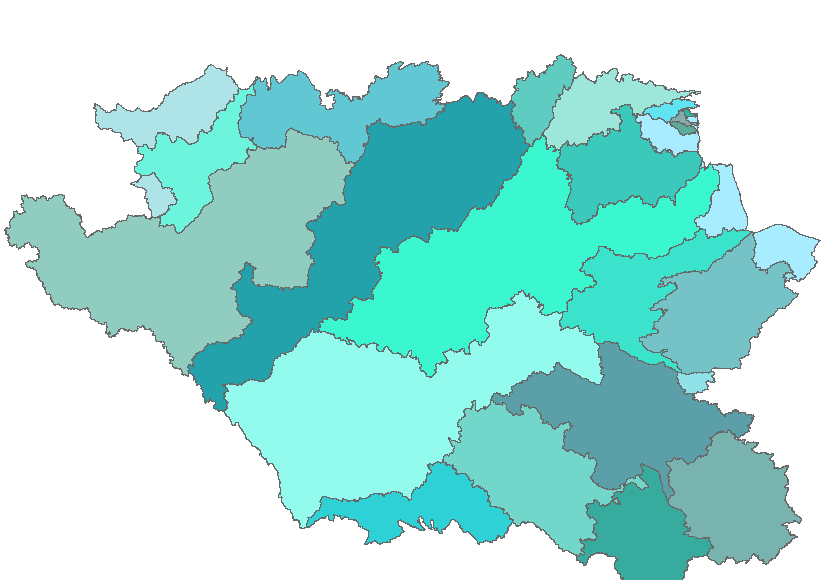Western provinces
Type of resources
Topics
Keywords
Contact for the resource
Provided by
Years
Representation types
Update frequencies
status
Service types
-

The Community Pasture Program was a land-management service provided in the Prairie provinces. The program ended on March 31, 2019. The geographic data series that was associated with the program included information about program geography and facilities, including representations of fences and the fields they enclose, pasture outlines and features such as corrals, dams and gates. The information provided in this series is for reference purposes only.
-

The “Incremental Gross Drainage Areas of the AAFC Watersheds Project - 2013” dataset is a geospatial data layer containing polygon features representing the incremental gross drainage areas of the Agriculture and Agri-Food Canada (AAFC) Watersheds Project. The Project area is subdivided by hydrometric gauging station. The maximum area that could contribute runoff to each station, less that of its upstream neighbour(s) is called an ‘incremental gross drainage area’.
-

The "Total Gross Drainage Areas of the AAFC Watersheds Project - 2013" dataset is a geospatial data layer containing polygon features representing the maximum area that could contribute surface runoff (total gross drainage areas) for each gauging station of the Agriculture and Agri-Food Canada (AAFC) Watersheds Project. These polygons overlap as upstream land surfaces form part of multiple downstream gauging stations’ total gross drainage areas. Drainage area includes all land whose surface runoff contributes to the same drainage outlet or gauging station. Many gauging stations share the same headwaters, thus the overlapping areas (or polygons). The majority of the drainage areas in this dataset have shared areas.
-

The “Gross and Effective Drainage Area Boundaries of the AAFC Watersheds Project - 2013” dataset is a geospatial data layer containing line features representing boundaries associated with the ‘incremental gross drainage areas’ of the Agriculture and Agri-Food Canada (AAFC) Watersheds Project. The project is subdivided by hydrometric gauging station. The maximum area that could contribute runoff to each station, less that of its upstream neighbour(s) is called its ‘incremental gross drainage area’. Two types of boundary are provided: ‘gross’ and ‘effective’. ‘Gross’ boundaries separate adjacent incremental gross drainage areas. ‘Effective’ boundaries delimit, within each incremental gross drainage area, the separation between areas that supply runoff, based on average runoff, from those that don’t.
-

The “Sub-sub-basins of the AAFC Watersheds Project – 2013” dataset is a geospatial data layer containing polygon features representing the Standard Drainage Area Classification (SDAC) 2003 defined sub-sub-drainage areas of the Agriculture and Agri-Food Canada (AAFC) Watersheds Project. Canada has eleven major drainage areas which are divided into 164 sub-drainage areas; the 164 sub-drainage areas are then further divided into 978 sub-sub-drainage areas. All drainage areas, sub-drainage areas and sub-sub-drainage areas are named and have an identifying ‘number’. Sub-sub-drainage areas have ‘numbers’ that share a common ‘four-character’ designation. For example, the 05AB sub-sub-basin contains amongst others, station 05AB006, while the 05AC sub-sub-basin contains station 05AC007 (and others).
-

The “Gross and Effective Drainage Areas for Hydrometric Gauging Stations of the AAFC Watersheds Project - 2013” dataset is a table that provides the calculated gross and effective drainage areas associated with the hydrometric gauging stations of the Agriculture and Agri-Food Canada (AAFC) Watersheds Project. Areas are provided in square kilometres. ‘Gross drainage’ describes the total area of a catchment. ‘Effective drainage’ describes areas that are expected to contribute to an average runoff.
-

The “Sub-basins of the AAFC Watersheds Project – 2013” dataset is a geospatial data layer containing polygon features representing the Standard Drainage Area Classification (SDAC) 2003 defined sub-drainages of the Agriculture and Agri-Food Canada (AAFC) Watersheds Project. Canada has eleven major drainage areas which are divided into 164 sub-drainage areas. All drainage areas and sub-drainage areas are named and have an identifying ‘number’. Sub-drainage areas have ‘numbers’ that share a common ‘three-character’ designation. For example, the 05A sub-basin contains stations ‘numbered’ 05AB006 and 05AC007.
-

The “PFRA Sub-basins of the AAFC Watersheds Project – 2013” dataset is a geospatial data layer containing polygon features representing the 47 sub-basins within the Agriculture and Agri-Food Canada (AAFC) Watersheds Project, tailored for the Prairie Farm Rehabilitation Administration (PFRA) business needs.
-

The “Major Basins of the AAFC Watersheds Project - 2013” dataset is a geospatial data layer containing polygon features representing the 23 major basins of the Agriculture and Agri-Food Canada (AAFC) Watersheds Project. The Project is subdivided by ‘incremental gross drainage areas’ associated to individual hydrometric gauging stations. The maximum area that could contribute runoff to each gauging station, less that of its upstream neighbour(s) is called an ‘incremental gross drainage area’. Conceptually, the major basins are collections of the “incremental gross drainage areas” associated with particular major river or lake reach (for example, reaches of the Saskatchewan or Athabasca River). In practice, each major basin consists of the collection of incremental gross drainage areas, whose gauging stations’ numbers have collections of the same three first characters. For example, the Assiniboine River major basin contains the incremental gross drainage areas whose gauging station numbers start with 05J, 05M, or 05N.
-

The "Total Effective Drainage Areas of the AAFC Watersheds Project – 2013” dataset is a geospatial data layer containing polygon features representing the areas within the “total gross drainage areas” of each hydrometric gauging station of the Agriculture and Agri-Food Canada (AAFC) Watersheds Project that would contribute to average runoff. A ‘total gross drainage area’ is the maximum area that could contribute runoff for a single gauging station – the ‘total effective drainage areas’ are those parts of that ‘total gross drainage area’ that would contribute surface runoff to an average runoff. For each “total gross drainage area” there can be only one “total effective drainage areas”. These polygons may overlap with those from other gauging stations’ “total gross drainage area”, as upstream land surfaces form part of multiple downstream gauging stations’ “total gross drainage areas”.
 Arctic SDI catalogue
Arctic SDI catalogue